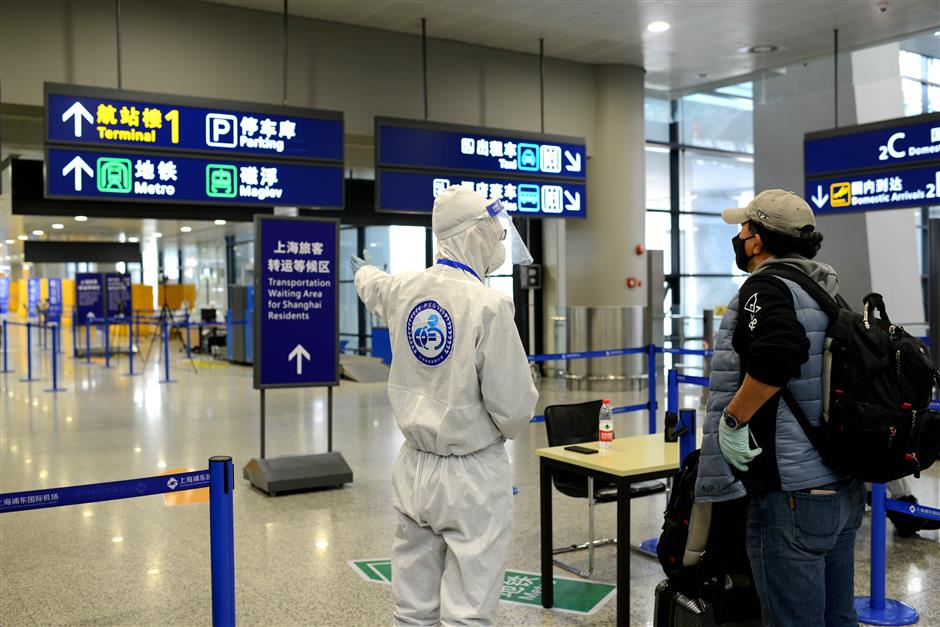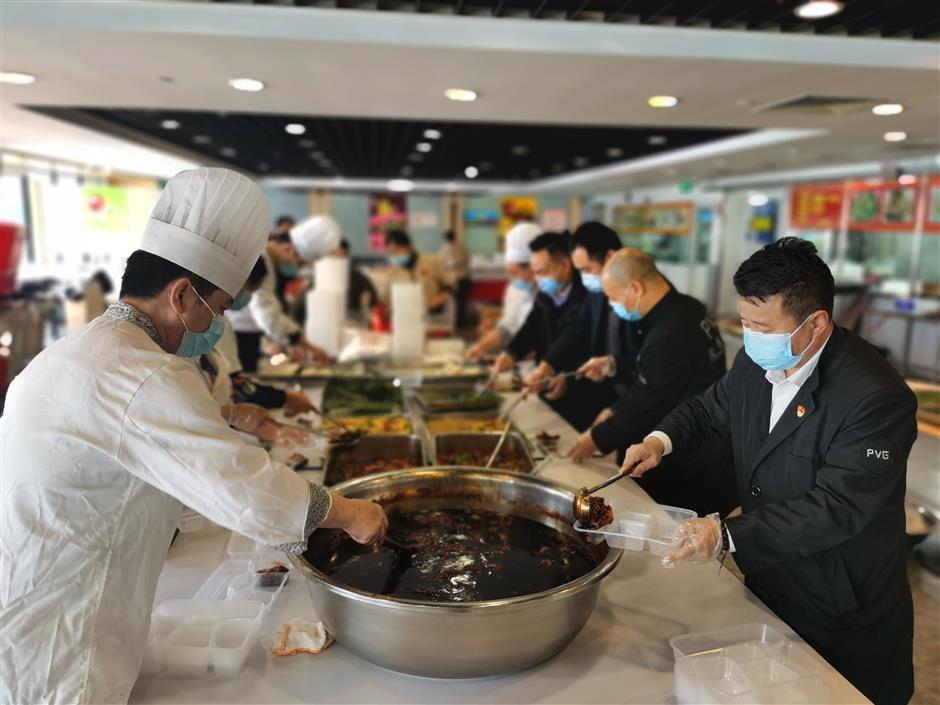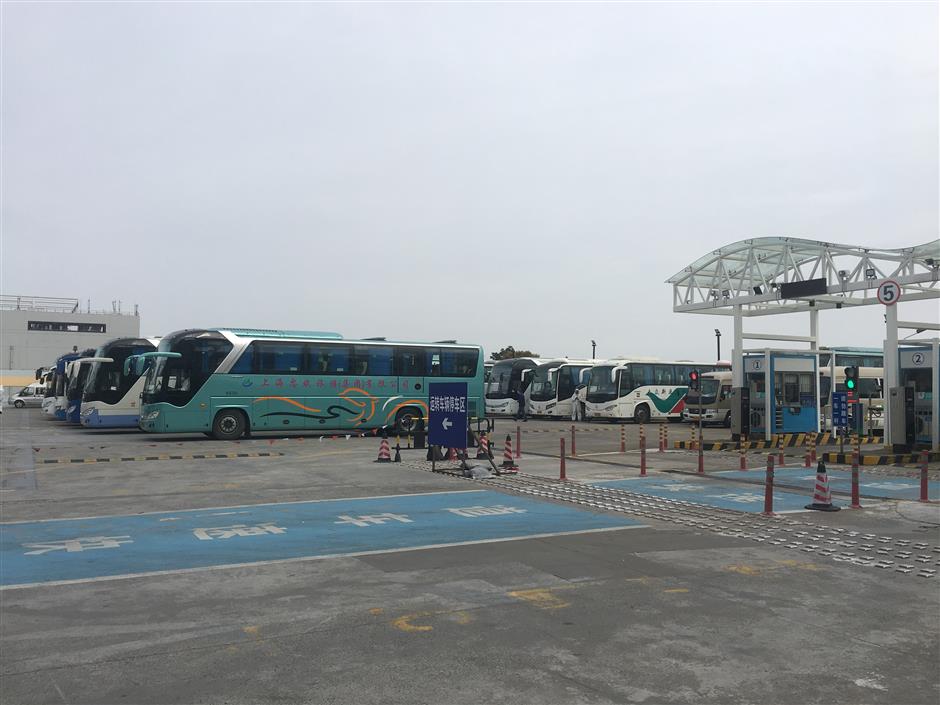Improved services for staff based at Pudong airport

An expanded pick-up section at the Pudong airport for district and provincial staff to send inbound travelers to quarantine sites.
The Pudong International Airport has expanded its sections for staff from local districts and neighboring provinces to pick up inbound passengers from overseas.
More services have also been offered for district and provincial staff who are working around the clock at the airport to safeguard the city from COVID-19.
Despite the sharp decrease in arrivals from abroad, the airport has tripled the size of pick-up areas in the T1 and T2 terminals as an increasing number of district and provincial staff are now based there.
Two 400-meter-long corridors near the arrival gates on the second floor of both terminals have been turned into the pick-up sections with desks and chairs for officials and volunteers from 16 local districts and neighboring Zhejiang, Jiangsu and Anhui provinces.
They are key to Shanghai's "closed loop" management for all inbound travelers, who will be transported to designated quarantine sites without contacting others.
All inbound passengers arriving in Shanghai are currently required to undergo a 14-day quarantine for medical observation at designated sites as part of the city's COVID-19 prevention measures.
They are also required to undergo nucleic acid tests before being sent to quarantine, or to a medical facility if their test results are positive.
Apart from the expanded space, the airport has designed streamlined walking routes for arrivals to reach the reception desks of the districts or provinces where they live more conveniently.

Pudong airport staff prepare meals for an increasing number of staff and volunteers.
Hundreds of signs and posters have been added to guide the arrivals. Over 300 tables and desks have been set up for district and provincial staff.
The airport authority also set up three changing areas for staff to take on and off hazmat suits. Disinfectant and garbage bins have been prepared there, along with hand sterilizers and a guide on how to properly wear the protection suits.
All coronavirus prevention waste, such as used face masks and hazmat suits, will be treated and transported separately according to stipulated procedures. Cleaners are dispatched to disinfect the sections in high frequency around the clock.
Over 2,500 sets of meals along with snacks are prepared for staff and volunteers every day. A special dining area has been set up along with hot water.
To ensure the parking of transport buses for the inbound travelers, the airport has allocated a special parking lot. An isolated walking route has also been designed for staff to escort travelers from the terminal buildings to the buses.
Zhang Ming, director of the airport's transport department, has been working at the airport since March 4 without returning home. To coordinate all requirements, he has to walk over 100,000 steps per day and answer hundreds of phone calls.
His colleague Shi Lixiang once slept only an hour while working continuously for three days. The busiest period is from afternoon until midnight.
"We cannot manage such a heavy workload without passion," Zhang said.

A changing area for staff to take on or off hazmat suits, along with garbage bins for coronavirus prevention waste.

A parking lot for buses to pick up inbound travelers from overseas at the Pudong airport.

















